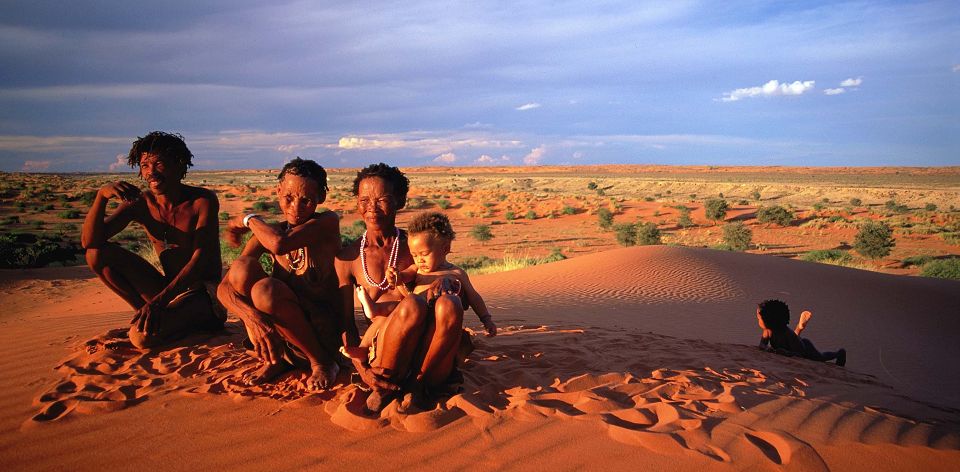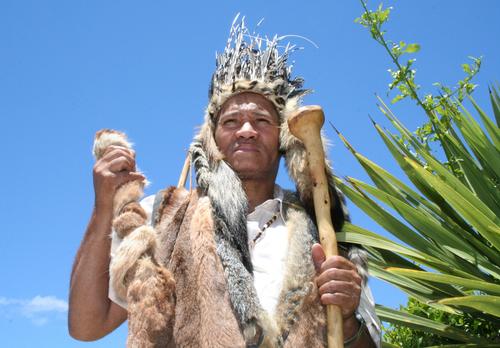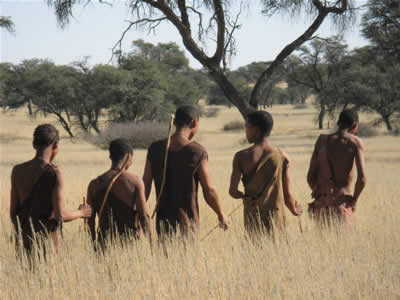The KhoeSan
Archaeology has shown that the earliest human communities ever
recorded lived in sight of Table Mountain. We cannot say for certain
how they lived, but since the climate is quite arid, and there is no
evidence of a complex civilisation, one can infer that they lived in
small nomadic groups hunting animals and gathering edible plants.
This is not to say they lacked sophistication - their art, some dated
at 27,000 years old, has been described as 'one of the high points of
human visual creativity' (Ross, 1999, pg. 9).
The San
The San encamped under rock overhangs in the mountains or in small camps
in dry areas. It is clear they lived in the mountain ranges just north
of Cape Town until the nineteenth century.
They lived in small nomadic 'bands', numbering between 20 and 80 people,
consisting of several family groups.
The women foraged around the camp for food, gathering bulbs (especially
those of Arum lilies), roots, stalks and fruits. They also made clothes
from skins sewn with catgut.
The Khoekhoe
The name 'Khoekhoe' means 'men of men'. Their herds of sheep and cattle
gave them a stable, balanced diet and they lived in larger groups than
the San.
Clan groups, descended from a common ancestor, lived with their chief in
kraals where they kept their herds. They made their small homes of reed
mats covered with animal skins. An elephant's ear served as a door.
Clans were identified with a particular territory, but were semi-nomadic,
moving whenever grazing land became depleted. The territories were not
rigid and overlapped. The chiefs of several clans recognised a paramount
Chief and were loosely associated under him as a 'tribe'.


